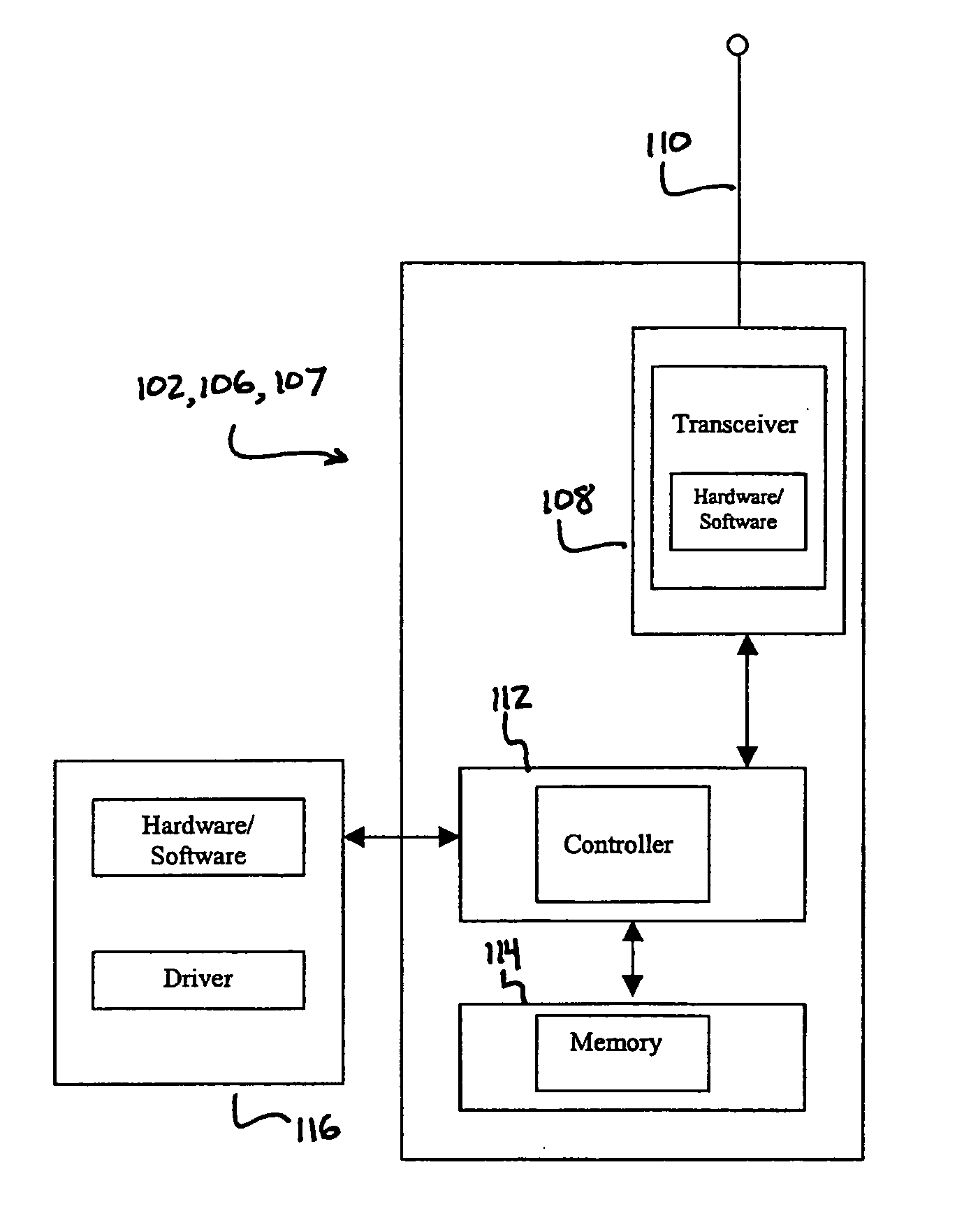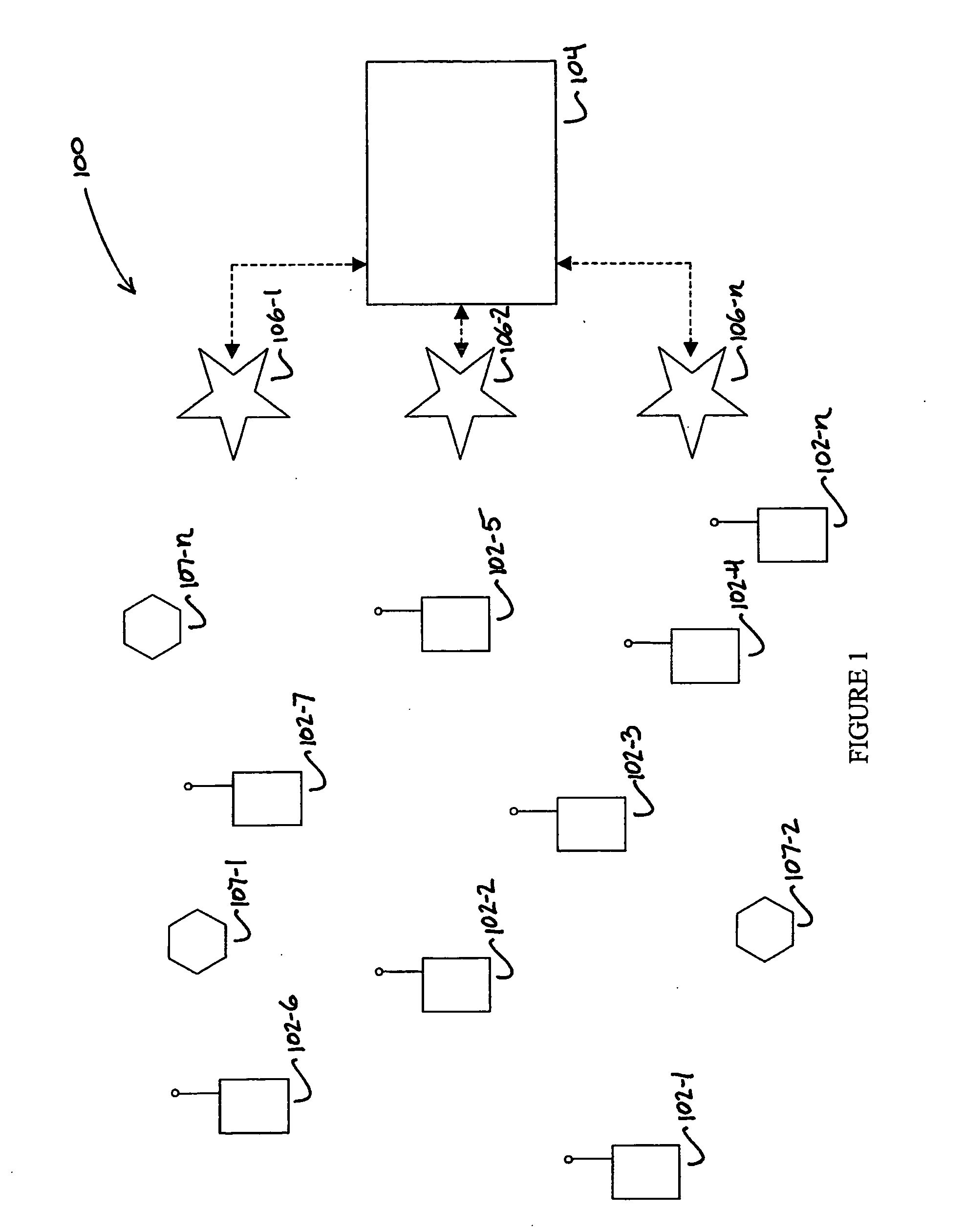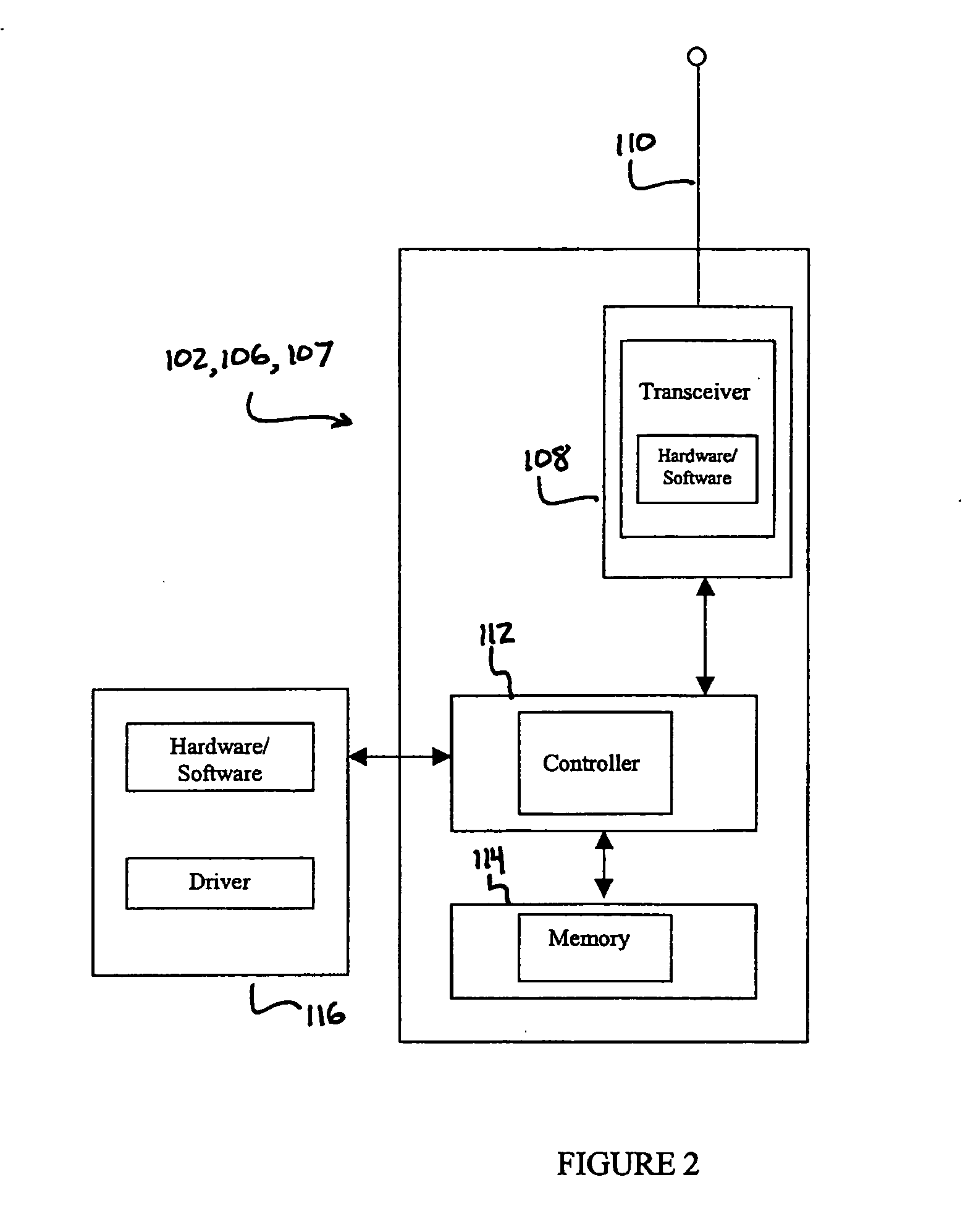System and method to provide fairness and service differentation in ad-hoc networks
a network and network protocol technology, applied in the field of wireless ad hoc network systems, can solve the problems of increasing collision, reducing backoff time of each node, and affecting the service quality of the network, so as to achieve the effect of maximizing the awareness of the neighborhood
- Summary
- Abstract
- Description
- Claims
- Application Information
AI Technical Summary
Benefits of technology
Problems solved by technology
Method used
Image
Examples
second embodiment
The local scheduling algorithm is based upon a two-way distributed, self-coordinating approach to provide fairness and service differentiation in an ad hoc network by using reservation data information. The resulting distributed scheduling in the wireless ad hoc network, including any number of mobile nodes, can be achieved through the following steps in accordance with a first and second embodiment of the present invention.
In a first step, a weighted factor of traffic load and priority is measured at each node. In a second similar step, at each node a weighted factor of traffic load and priority is measured for each neighbor node. These values are used alone, or in combination in a third step to compute at a sending node an access time interval based on the traffic at the sending node, and the sending node's neighbor nodes' traffic conditions. This comprises part one of the two-way scheduling that is initiated by the sender, and coordinated by the receiver as described below in st...
first embodiment
In the scheduling algorithm, each node that overhears an RTS and CTS message exchange will update its local traffic table by computing channel holdoff time based upon packet length and data channel rate, and address holdoff time based upon source and destination address busy time.
In the second embodiment of the scheduling algorithm, each node that overhears an RTS and CTS message exchange will update its local traffic table by computing channel holdoff time based upon packet length and data channel rate, address holdoff time based upon source and destination address busy time, and weight values.
Based on this information, in both the first and second embodiments each node schedules the next channel access time for use. If an unintended RTS or CTS message is heard, the node computes a release time for the corresponding addresses and channel. This release time depends on the packet duration and a random time interval, which in turn depends on the node weight. The random interval can...
PUM
 Login to View More
Login to View More Abstract
Description
Claims
Application Information
 Login to View More
Login to View More - R&D
- Intellectual Property
- Life Sciences
- Materials
- Tech Scout
- Unparalleled Data Quality
- Higher Quality Content
- 60% Fewer Hallucinations
Browse by: Latest US Patents, China's latest patents, Technical Efficacy Thesaurus, Application Domain, Technology Topic, Popular Technical Reports.
© 2025 PatSnap. All rights reserved.Legal|Privacy policy|Modern Slavery Act Transparency Statement|Sitemap|About US| Contact US: help@patsnap.com



